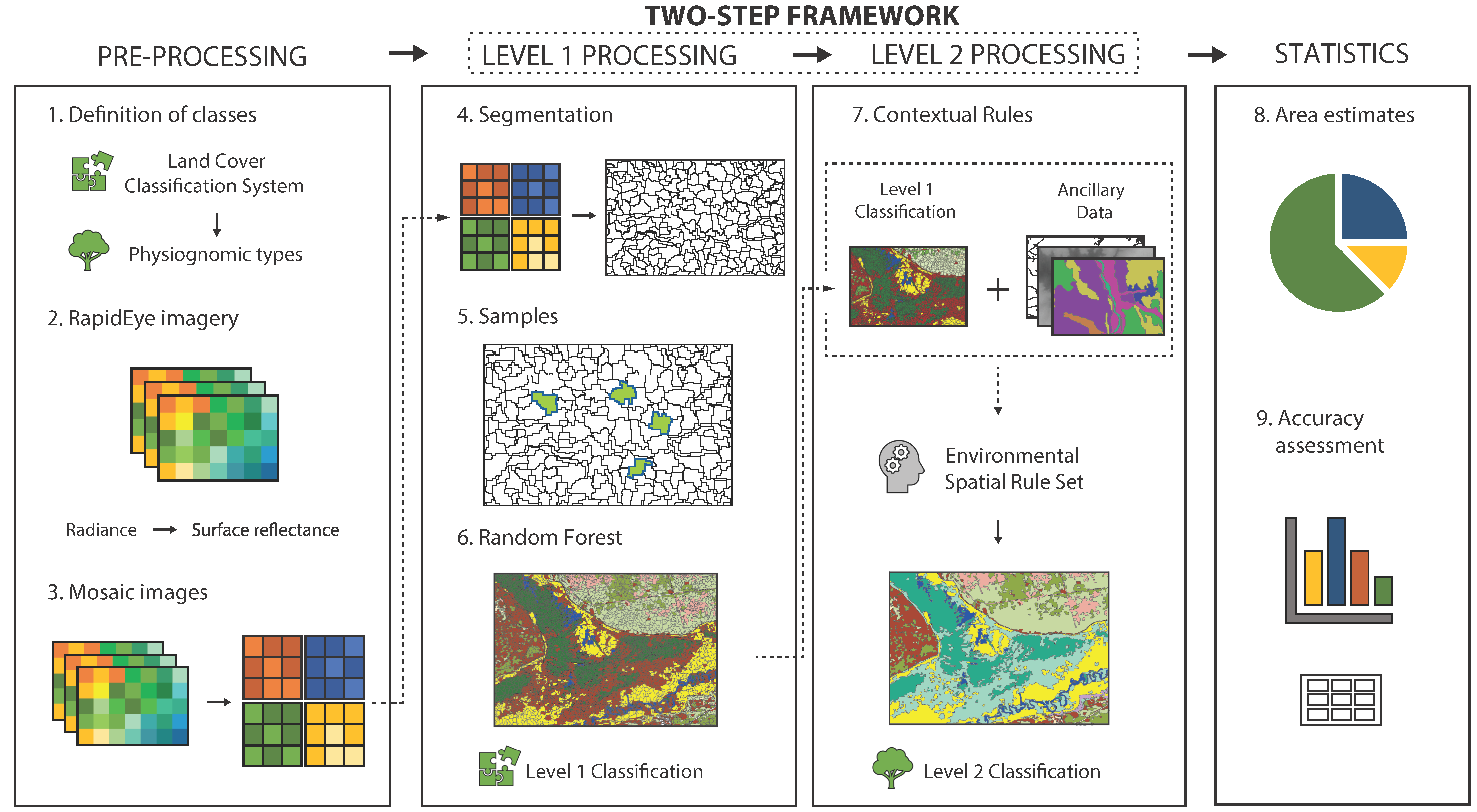

Exceptions are geostationary satellites, such as weather satellites, with coarse spatial resolution. For satellites that point vertically down at the earth, such as the Landsat series, temporal resolution is 16 days to cover the same geographic location. It is determined by number of satellite overpasses, orbital mechanics, and the agility of the sensor platform. Temporal resolution refers to the frequency of coverage of a geographic location, usually by a class of satellite sensor platforms. These sensors operate with frequencies that are much longer than their electro-optic counterparts and provide imagery with geometries that also depart from perspective geometry. There are also active sensors, such as radar, that provide their own illumination. Geometrically, these sensors are similar to other electro-optic imagery, but they sense areas of the electromagnetic spectrum not visible to the eye. These are electro-optical but collect a portion of the spectrum that represents emitted heat rather than reflected solar energy. Many sensors operate in the nonvisible portion of the spectrum, such as thermal infrared sensors. Hyperspectral sensors are less common than multispectral sensors because they are usually deployed in aircraft and are more expensive, and they require specialized expertise to operate, process, and analyze the data. Hyperspectral sensors provide more detailed information, such as vegetation species, water quality, or characteristics of a material. Hyperspectral sensors collect many (more than 100) narrow bands (5 to 10 nanometers) strategically placed to sense specific portions of a feature’s spectral signature. Multispectral sensors collect four or more nonoverlapping bands that are fairly wide (50 to 80 nanometers) and placed to distinguish broad categories of features such as vegetation, soil, water, and human-made features. These characteristics determine the type of features and phenomena that can be detected and mapped. Spectral resolution refers to the ability of the sensor to measure the spectral signature of a feature.

The spectral characteristics of a sensor are composed of the number of imaging bands, wavelengths of the bands, spectral width of the bands, and the signal-to-noise ratio. Spectral resolution is determined by the sensor and measures portions of the electromagnetic spectrum. Spatial resolution is closely associated with a project’s minimum mapping unit, since a sufficient number of pixels are needed to identify a feature.

Small pixel size is not always suitable for a particular project, such as land-cover classification for a state, province, or country. Feature extraction techniques may work well at one GSD but fail at other GSDs, which also needs to be considered. Small pixel sizes, such as 3 inch or 10 centimeter, result in very large files that can be difficult to process, store, and manage. Generally, the smaller the pixel size, the greater the detail contained in the image. GSD determines the level of spatial detail and types of features visible in the image. This is a function of both the sensor capability and the flying height of the sensor. Spatial resolution refers to the size of the pixels (picture elements) on the ground comprising the image, and is often referred to as ground sample distance (GSD). The nature of the information contained in imagery depends primarily on three types of resolution: spatial, spectral, and temporal, which all affect the minimum mapping unit of a project. Whether imagery is being visually analyzed or processed using remote-sensing image processing techniques, factors such as minimum mapping unit, spectral band width and placement, and geopositional accuracy, determine the suitability of particular types of imagery for your project’s goals and requirements. The first level of distinction is the information content contained in imagery, and the geometric characteristics of imagery. The conditions of each project drive the imagery collection and processing requirements, which distinguish types of imagery into categories. All remote-sensing imagery is not the same, and it is generally collected to meet project requirements. Remote-sensing imagery is collected by a satellite, an aircraft, or a drone platform.


 0 kommentar(er)
0 kommentar(er)
